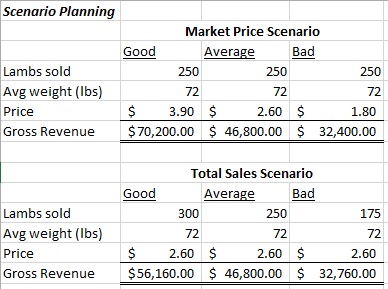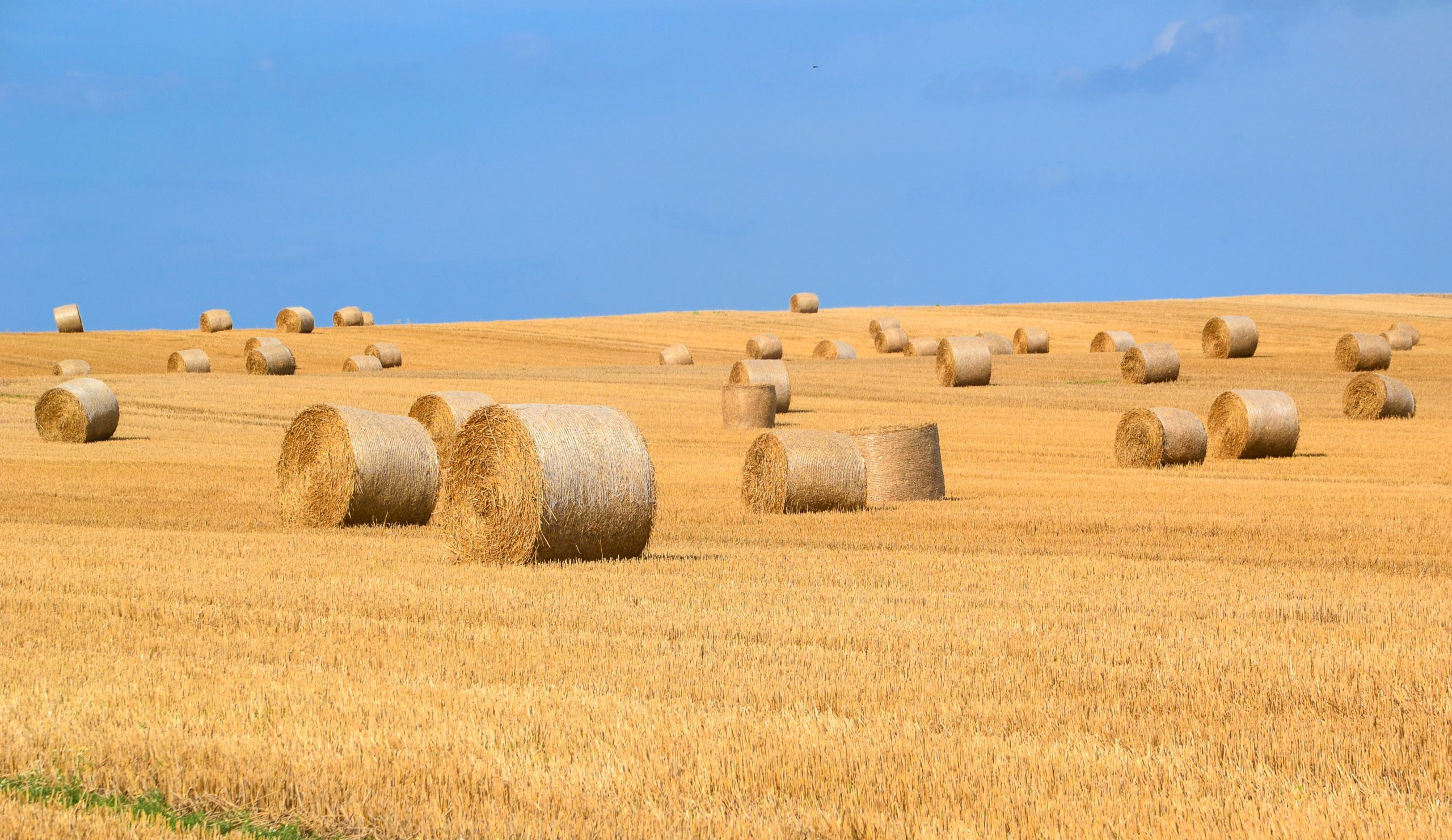On the weekend I released the Budget Primer which outlined the very barebones basics of budgets. Part of the process of budgeting is to do your research. Without research, you’re bowling in the dark, you have no idea what to expect and how to manage your risks. As a farmer, a major risk you will face is prices. The majority of farms are price takers which means that as farmers we don’t get to make a choice what price we get paid. We can look at the pricing cycle and try to optimize the timeline but overall, its going to be a challenge to just post a price and get that price.
This is where scenerios comes in handy. Scenario planning is adjusting your budget for what will happen if one or two variables change. Usually for farm budgets you would be adjusting your revenue to see how market price changes affect your income and if your costs are still acceptable. You can also do scenario planning with your expenses which I will cover at the end of this. Generally, you would pick 3 scenarios to start with; best case, worst case and average. I’m going to use actual sheep numbers, market prices and research but this will work for pretty much anything. As a sheep farmer, I just have a lot more information available to illustrate scenerios using sheep information. You can find the same type of information for pretty much every industry.
Market Research
Start out with market research, go online for current and historical market pricing. Here are some links to get you started:
- Beef: Beef Farmers of Ontario Alberta Beef Producers
- Sheep: Ontario Sheep Farmers Alberta Lamb Producers
- Hogs: Ontario Pork Manitoba Markets
- Grain: Grain Farmers of Ontario Alberta Canola
You can also look up local auction reports for your region, talk to other producers and if you are looking at direct marketing, visit farmer’s markets. Take the prices you get from other producers with a grain of salt… sometimes prices are a bit like a fish story, just a bit bigger than the facts.
Reading Market Reports
If you are new to selling livestock in a market setting, most prices are reported in CWT (cents per hundred weight) and by the pound. Just move the decimal forward two points to get the price per pound. Then you multiply the weight of the animal by the price per pound. That is your gross selling price.
Remember to deduct the commission and marketing fees when you sell through the sales barn for your net selling price. Pork works differently, it is a dressed weight by the kilogram. Most live animal sales are by the pound. Most crops are by the metric tonne or the bushel. Check the number and keep track of the units so that you don’t multiply the wrong values.
Scenarios – Revenue
Once you have done your research, go head and pick your first variable. I suggest working with market price first. Use your research to determine a worst case price, a best case price and an average price. I’m going to focus on the following prices, 1.80/lbs (worst), $3.90 (best) and average of $2.60 for the 65-79 pound light lambs that I market.
Make a copy of your existing budget and copy your values with formulas into three columns side by side. Label the columns with whatever labels you want (best, average, worst). When doing the market price it helps to calculate your expected revenue as a function of three variables, the price per pound, average weight of animals sold and number of animals sold.

For the first scenario, keep all of the other costs and values the same and just change the price per pound. Look at your results. Can you live with those prices?
Next, make a copy of your tab or use the same three columns. Set your price to the average and change the number of animals sold to what you would consider your best, expected and worst case.
Once you have these two main scenarios worked out, you can play with the variables however you want. I suggest you look at the following:
- Expected production against price changes
- Worse case production against worst price
- Lower expected production average price by 10 and 20 percent
- Lower expected average price by 10 and 25 percent
Last week I mentioned setting up your budgets on a seasonal basis. Set it up for seasons if there are seasonal price cycles to see when you should try to market most of your animals.
Scenarios – Costs
You can repeat this same market research with the costs as well. You can do a scenario for a change in the quantity or price of:
- Fertilizer
- Premix
- Pesticides
- Hay
- Prepared Feed
- Vaccines
You can also vary the total costs by a percentage. For example, you could run a scenario where your entire budget costs increase by 5 percent and see how that impacts you. The key is to remember which variables you are changing and to be consistent in tracking the change and your resulting analysis.
Non-financial Scenarios
You can also plan for more complex scenarios which can include:
- Drought
- Flood
- Early frosts
- Disease
- Crop damage
- …. adjust your production numbers and your feed stockpiles
In these scenarios you would change multiple variables including the production and costs. For example, in a drought you would probably see your feed costs increase dramatically while the market price for your livestock drops as other producers sell off. On the crop side, you might see the price rise while yields drop in a drought. You can research past events in your region to get an idea of might happen and then build a scenario for that. You can figure out what kind of stockpiles and squirrel fund cash you would need to survive each scenario.
Applications
Playing with scenarios lets you see how various items can affect you, your farm and your financials. Working through this before it happens is very helpful to help you be prepared. I’ll provide a real life scenario. Droughts have been common in my part of Canada recently. I have designed scenarios and calculated the amount of feed I need to have on hand well in advance. This planning means I can react in the late summer around harvest to increase my stockpiles if necessary.
If you are planning expansions, you can use scenarios to sort out what is feasible and what is not. While the examples focusing on changing one or two variables, you can build as detailed of a scenario as you want. You can then use the results to finalize your expansion plan budget.
Essentially scenario planning is playing around with the numbers and taking notes so that you can reduce your stress and vulnerabilities in advance. What scenario will you test out?

LEAVE A COMMENT
Comments